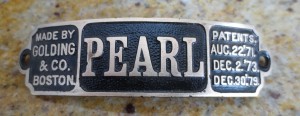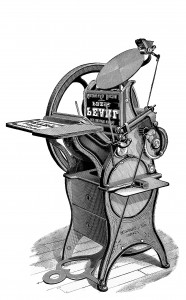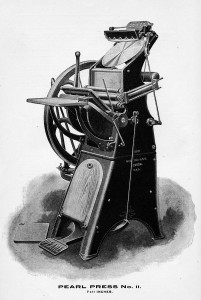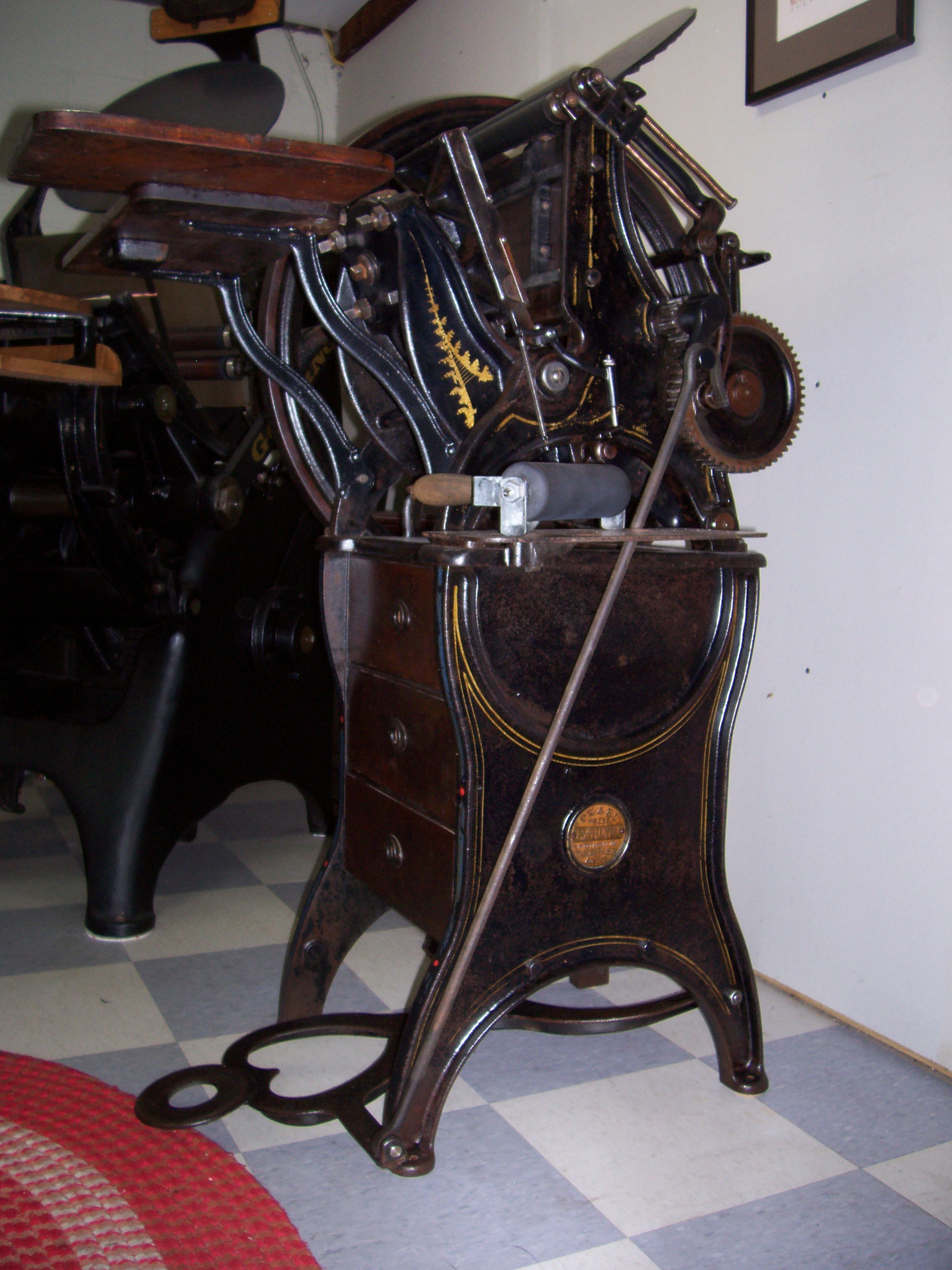Golding Pearl information
There is not much question that the line of William Golding’s Pearl presses are some of the most sought after platen presses in North America today. Both the Old Style and the Improved versions are loved for their aesthetic appeal, printing capability, and relative light weight and small footprint. The name “Pearl” was aptly chosen by William Golding. It is just that, a “Pearl” of a press! As a retired enthusiast and collector living in Golding’s backyard I have the unusual advantage of time and access to more of his wonderful presses than most. At this point I suspect the number to be over 100. Some I have just studied and photographed, while others have been purchased, disassembled, and restored to sell. I currently have several in my personal collection that are wonderful original examples from very early in the production period.
All presses are at least 99% complete and have original parts, right down to the screws and some rare accessories. There is just something very special about a Golding Pearl. While there are several sizes available in both the Old Style and the Improved, the most popular by far is the 7″ x 11″ . Size is determined by the inside chase dimensions. This size can handle most work done by most people and is my primary focus. The purpose of this page is to share what I have learned about these wonderful presses, and answer any questions you may have. If you are new and getting into letterpress, you should want a Pearl!
John Falstrom
Click on press images to the left and right to see actual presses
Why purchase a Pearl rather than a tabletop? Tabletop presses are admittedly very popular. This is not because they are the best presses available. It is primarily due to the buyer thinking their light weight affords easier moving and small size occupies less space. The irony is a good tabletop of comparable chase size is going to weigh a couple hundred pounds or more and will need to be put on a sturdy table which makes it take up about the same space as the Pearl. (A good example is the Chandler and Price Pilot.) The Pearl can also be broken down into Pilot sized pieces to move. So, there is really not much advantage to purchasing a large tabletop from a space required or weight for moving perspective. Add the Pearls advantage of a treadle or a motor and the flywheel energy that helps with impression and printing speed and the equation tilts in favor of the Pearl. Next, with the Improved Pearl, you add another roller and a throw off lever, and often a lower price, and it becomes a no contest comparison. I have been noticing the price advantage is slowly disappearing as people who purchase tabletops, quickly outgrow them or become frustrated, and want something more like a Pearl.
Below is slideshow comparison between an 1877 and 1890 Old Style Pearl. The images depict some of the changes that occurred during those years. It is important to understand changes were occurring to all models throughout production periods and in many instances the parts are not interchangeable.
Have a question about the Pearl? email me here: john.falstrom@att.net



